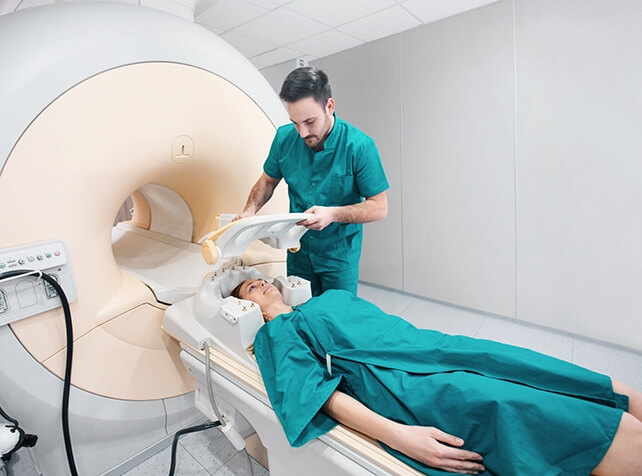
Medical research has evolved for years and has developed ways to understand almost every disease and disability. Radiographers have long been the most important field in medical science as it assists medical professionals in knowing what is happening inside the body. Until today, radiology is known to be the most challenging branch of study in the medical field.
In any case of market conditions, the anticipation for radiography as a profession is always on the positive side as there is an increasing demand for these allied professionals who work with machines and advanced technology.
Who Are Radiographers?
Radiographers are allied paramedics who take care of operating x-ray and other scanning machines. They usually take images and videos of the problematic body part and assist doctors in the treatment.
The role of a radiographer in producing MRIs, X-rays, ultrasounds, etc., is highly crucial. The radiologist interprets these images and communicates the result to the doctor, following which the patient’s treatment starts.
Radiographers are bachelor’s degree holders who learn medical imaging, medical radiation, and other fields. They learn textual and practicals of machine operations during a two- or three-year program. Then, they take an additional year of supervised practice, which imparts them proper training.
What Machines Do They Work With?
Radiographers operate many technologically advanced machines that require careful handling and extra precautions. The machines are extensive and need specialised skills and training to get the right results. A medical center’s radiology room is the right place for these technicians as they know the nuances of operating such tech-savvy heavy machinery. The various machines and tools that radiographers work with are as follows:
CT Scanners:
These are usually required to get internal body images from various angles. In addition, it helps the doctors diagnose any problem in the muscles, limbs, etc.
X-Rays:
X-ray machines image the body’s bone structure to identify any fracture. This also helps in determining more minor problems in the internal body.
MRI Machines:
Similar to CT scans, this radiation machine also takes extensive images and videos of the internal body to identify the problem.
Besides the operation and handling of the technical process, radiographers also help the radiology department maintain the machines and utilize them effectively. Furthermore, they take care of everything that might be required to extend the machine’s life as they are well-versed with every part of the equipment.
What Is Their Job Description?
Their job descriptions involve many processes ranging from preparing the patient for the scans to preparing the hard drives for the images, etc. These are some of the other duties they perform:
- They help oncologists with radiation treatment for cancer patients.
- They prepare patients for all radiological scans and treatments.
- They maintain the equipment and calm the patients during the process.
- Finally, they ensure that the patient and the other staff take all the safety measures.
Apart from the radiology department, they may help in other departments such as operation theatres, surgery rooms, emergency departments, cardiac care, ICU, etc., where constant monitoring of the patient’s radiological measures is required.
Bottomline:
Radiography is an extensive field not only limited to clicking images. Without a compassionate and well-versed radiographer, it becomes difficult for a doctor to diagnose the disease deeply. Furthermore, these technicians perform adequate research on new methods to make radiological treatments easy for patients.






